AFLATOXIN M1
- CAS NO.:6795-23-9
- Empirical Formula: C17H12O7
- Molecular Weight: 328.27
- MDL number: MFCD00871812
- EINECS: 229-865-4
- SAFETY DATA SHEET (SDS)
- Update Date: 2024-07-02 08:55:17
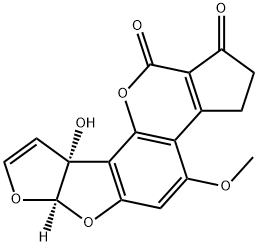
What is AFLATOXIN M1?
Chemical properties
Solid
Chemical properties
The aflatoxins are a group of molds produced by the fungus Aspergillus flavus. They are natural contaminants of fruits, vegetables, and grains. They are also described as a series of condensed ring heterocyclic compounds. They form colorless to pale yellow crystals. Practically insoluble in water.
The Uses of AFLATOXIN M1
An Aspergillus flavus metabolite. Aflatoxin M1 in milk as a secondary metabolite of the Aflatoxin B1 formed in moldy forages. It is cancerogenic, hepatotoxic, and immunosuppressive in animals and man.
Definition
ChEBI: A member of the class of aflatoxins that is aflatoxin B1 in which the hydrogen at position 9a is replaced by a hydroxy group.
General Description
Certan Vial
Safety Profile
Confirmed carcinogen with experimental tumorigenic data. Poison by ingestion. Mutation data reported. When heated to decomposition it emits acrid smoke and irritating fumes. See also various aflatoxins.
Potential Exposure
Aflatoxins are a group of toxic metabolites produced by certain types of fungi. Aflatoxins are not commercially manufactured; they are naturally occurring contaminants that are formed by fungi on food during conditions of high temperatures and high humidity. Most human exposure to aflatoxins occurs through ingestion of contaminated food. The estimated amount of aflatoxins that Americans consume daily is estimated to be 0.15 0.50 μg. Grains, peanuts, tree nuts, and cottonseed meal are among the more common foods on which these fungi grow. Meat, eggs, milk, and other edible products from animals that consume aflatoxincontaminated feed may also contain aflatoxins. Aflatoxins can also be breathed in
Shipping
UN3172 Toxins, extracted from living sources, solid or liquid, Hazard Class: 6.1; Labels: 6.1-Poisonous materials, Technical Name Required. UN2811 Toxic solids, organic, n.o.s., Hazard Class: 6.1; Labels: 6.1-Poisonous materials, Technical Name Required.
Incompatibilities
Incompatible with oxidizers (chlorates, nitrates, peroxides, permanganates, perchlorates, chlorine, bromine, fluorine, etc.); contact may cause fires or explosions. Keep away from alkaline materials, strong bases, strong acids, oxoacids, epoxides.
Waste Disposal
Consult with environmental regulatory agencies for guidance on acceptable disposal practices. Generators of waste containing this contaminant (≥100 kg/mo) must conform with EPA regulations governing storage, transportation, treatment, and waste disposal. Use of oxidizing agents, such as hydrogen peroxide or 5% sodium hypochlorite bleach. Acids and bases may also be used.
Properties of AFLATOXIN M1
| Melting point: | 299℃ |
| Boiling point: | 386.03°C (rough estimate) |
| alpha | D -280° (c = 0.1 in DMF) |
| Density | 1.3358 (rough estimate) |
| refractive index | 1.4790 (estimate) |
| Flash point: | 11 °C |
| storage temp. | 2-8°C |
| solubility | Acetonitrile:Methanol (1:1): 1 mg/ml |
| pka | 10.76±0.20(Predicted) |
| form | White to yellow powder. |
| color | White to off-white |
| BRN | 1630643 |
Safety information for AFLATOXIN M1
| Signal word | Danger |
| Pictogram(s) |
 Skull and Crossbones Acute Toxicity GHS06  Health Hazard GHS08 |
| GHS Hazard Statements |
H340:Germ cell mutagenicity H350:Carcinogenicity |
| Precautionary Statement Codes |
P202:Do not handle until all safety precautions have been read and understood. P260:Do not breathe dust/fume/gas/mist/vapours/spray. P264:Wash hands thoroughly after handling. P264:Wash skin thouroughly after handling. P280:Wear protective gloves/protective clothing/eye protection/face protection. |
Computed Descriptors for AFLATOXIN M1
New Products
Tert-butyl bis(2-chloroethyl)carbamate (S)-3-Aminobutanenitrile hydrochloride N-Boc-D-alaninol N-BOC-D/L-ALANINOL N-octanoyl benzotriazole 4-Hydrazinobenzoic acid 3,4-Dibenzyloxybenzaldehyde Electrolytic Iron Powder 1,1’-CARBONYLDIIMIDAZOLE R-2-BENZYLOXY PROPIONIC ACID 4-HYDROXY BENZYL ALCOHOL 1,1’-CARBONYLDI (1,2-4 TRIAZOLE) S-2-CHLORO PROPIONIC ACID (2-Hydroxyphenyl)acetonitrile 4-Bromopyrazole 5-BROMO-2CYANO PYRIDINE 5,6-Dimethoxyindanone 5-broMo-2-chloro-N-cyclopentylpyriMidin-4-aMine 3-(Hydroxymethyl)benzoate N-Boc-2-chloroethylamine 1-Bromo-2-methoxy-3-nitrobenzene N-Methyl-3-cyclopenten-1-amine 2-Bromo-3-hydroxybenzaldehyde 1H-indazole-5-carboxamideRelated products of tetrahydrofuran
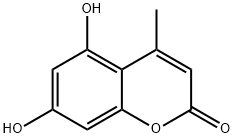
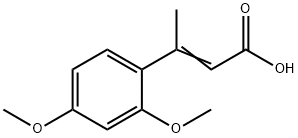

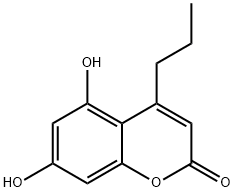

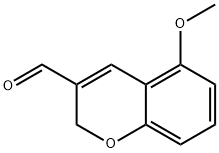
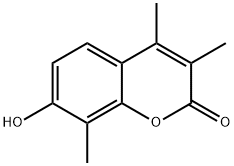
![AFLATOXIN M1, [3H(G)]](https://img.chemicalbook.in/StructureFile/ChemBookStructure4/GIF/CB3238165.gif)
You may like
-
 Aflatoxin m1 95% CAS 6795-23-9View Details
Aflatoxin m1 95% CAS 6795-23-9View Details
6795-23-9 -
 Aflatoxin M1 solution CAS 6795-23-9View Details
Aflatoxin M1 solution CAS 6795-23-9View Details
6795-23-9 -
 Aflatoxin M1 solution CAS 6795-23-9View Details
Aflatoxin M1 solution CAS 6795-23-9View Details
6795-23-9 -
 Aflatoxin M1 CAS 6795-23-9View Details
Aflatoxin M1 CAS 6795-23-9View Details
6795-23-9 -
 7441-43-2 98%View Details
7441-43-2 98%View Details
7441-43-2 -
 1260741-78-3 6-Bromo-3-iodo-1-methyl-1H-indazole 98%View Details
1260741-78-3 6-Bromo-3-iodo-1-methyl-1H-indazole 98%View Details
1260741-78-3 -
 2490430-37-8 98%View Details
2490430-37-8 98%View Details
2490430-37-8 -
 N-(5-Amino-2-methylphenyl)acetamide 5434-30-0 98%View Details
N-(5-Amino-2-methylphenyl)acetamide 5434-30-0 98%View Details
5434-30-0